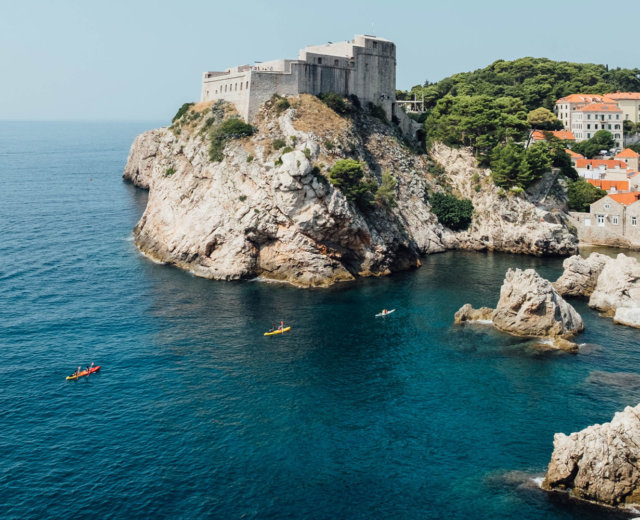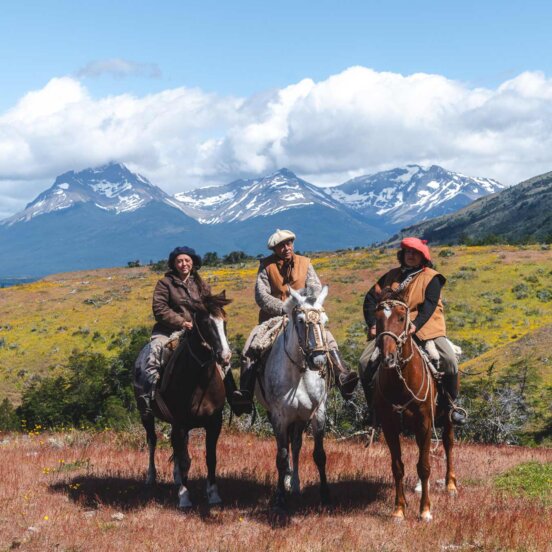Where to go in Spain: Our top 15 picks
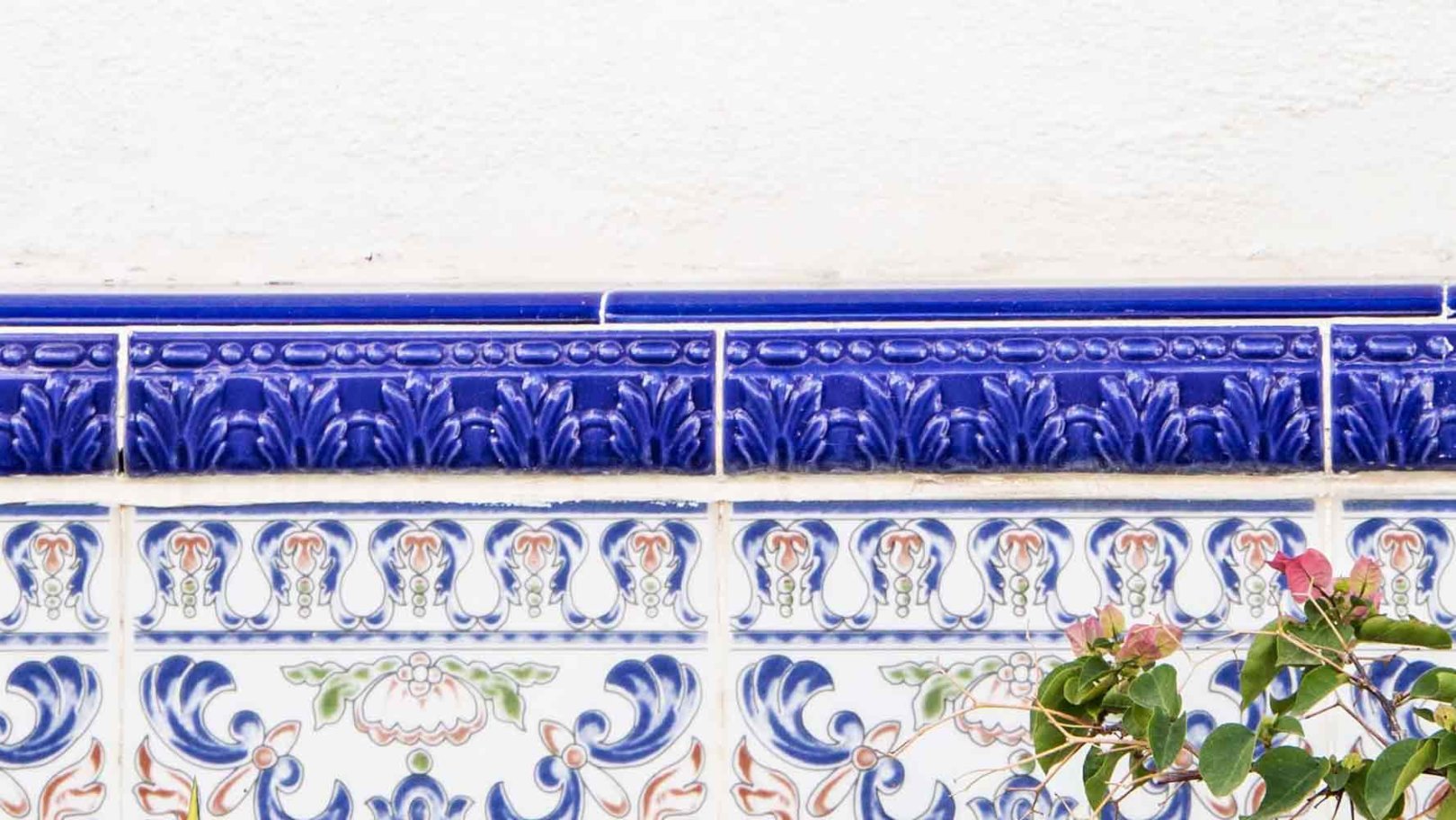
Spain consistently ranks as one of Europe’s most visited countries, thanks to its golden coastlines, celebrated cuisine and cultural vibrancy. With so many beautiful regions on offer, the question isn’t if, but where to go in Spain?
For those of you who are new to Spain, it’s worth considering that this is a vast and diverse country, and your experience will differ notably depending on where you are. Choosing the best places to visit in Spain for you will depend a lot on what you want out of a holiday.
Which part of Spain should I visit?
Well that depends on what you want to experience. As a country, Spain has something for every kind of traveller and each region has its own distinct flavour. There’s the Basque Country, Galicia and Castile and Leon in the north; Catalonia and Valencia to the east; Andalucia to the south; and Extremadura in the west – to name just a few of Spain’s regions. Offshore in the Mediterranean, the famous Balearic Islands – where you’ll find Mallorca, Menorca and Ibiza – draw in party-lovers, sun-worshippers and hippies in equal measure. And off the West African coast, the Canary Islands are home to popular destinations such as Tenerife and Lanzarote.
When choosing where to go in Spain, you’re spoilt for choice. So whether you’re after a city escape, rugged hiking or a gastronomic adventure, here’s your guide to fifteen of the best places to visit in Spain.
The best places to visit in Spain – cities
Madrid
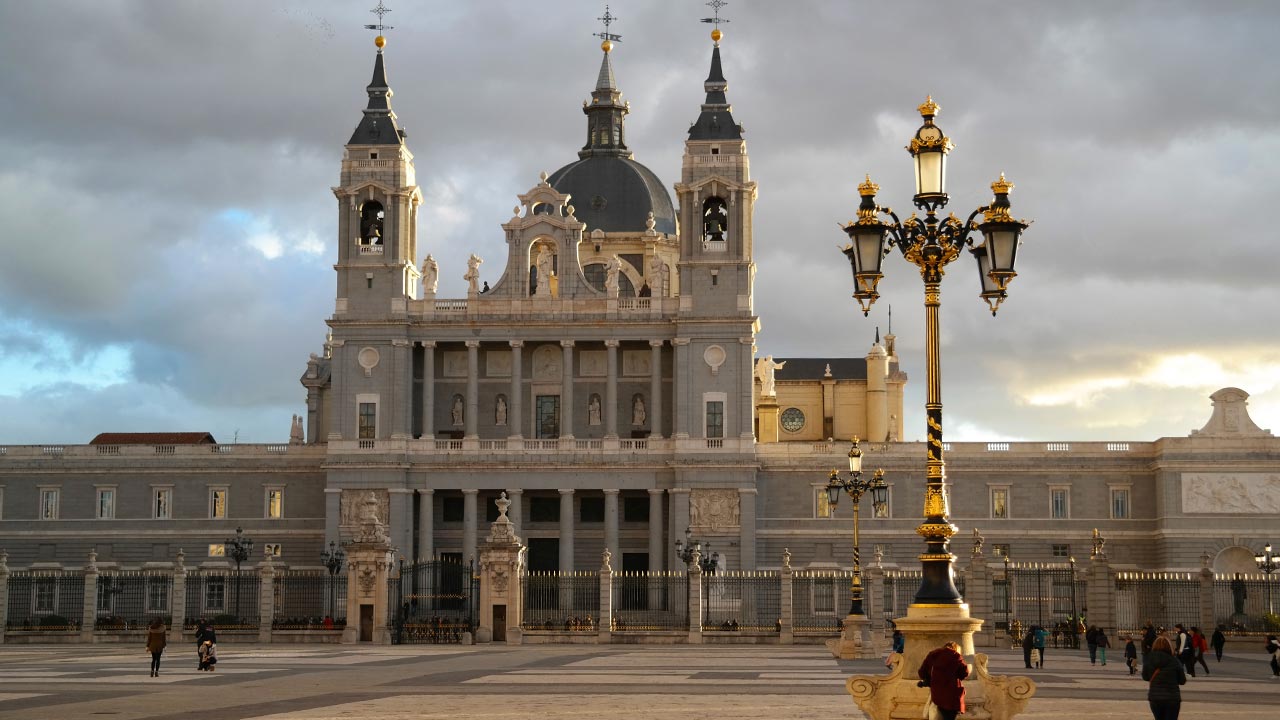
Best for: Tapas, nightlife and art
Region: Community of Madrid
Often overlooked in favour of trendy Barcelona, Spain’s capital has just as much to offer – from world-famous art galleries to a plethora of tapas bars. If it’s the former you’re after, Museo del Prado is a must-visit, housing a range of paintings by Spanish greats such as Goya, Velazquez and El Greco. Museo Reina Sofia is the national gallery of 20th century Spanish art, where you’ll find an array of works by Juan Gris and the breathtaking Guernica by Picasso. If it’s cuisine you’re seeking, you won’t be short on options: head to Mercado San Miguel for high-quality produce served up in an elegant market hall dating back to 1916; explore the beautifully-tiled streets of La Latina for traditional eateries; or sample the city’s nine Michelin-starred restaurants.
Seville

Best for: Moorish and Almohad heritage
Location: Andalusia
Where Madrid exudes cool European elegance, Seville opens a world of Moorish beauty, flamenco and medieval streets – the perfect place to go to begin your Andalusian adventure. To immerse yourself in the city’s multi-religious heritage, a good place to start is the Real Alcazar. Dating back to the 13th century, this ornate palace was built for the Christian king Pedro I on the site of an Islamic fortress. Retaining its Moorish style, it’s a stellar example of Seville’s unique Mudejar architecture. If you’re looking for art, head to the Museo de Bellas Artes, which houses a vast collection of Baroque and Golden Age masterpieces. For a true medieval experience, be sure to explore Seville’s cathedral – the third largest in Europe (and by virtue, one of the largest in the world). It was built in the 1400s over a mosque, and its bell tower, La Giralda, was repurposed from the mosque’s minaret. You’ll be able to climb the steps up La Giralda to enjoy sweeping views of the city. For art and history lovers, Seville is easily one of the best places to visit in Spain.
Granada
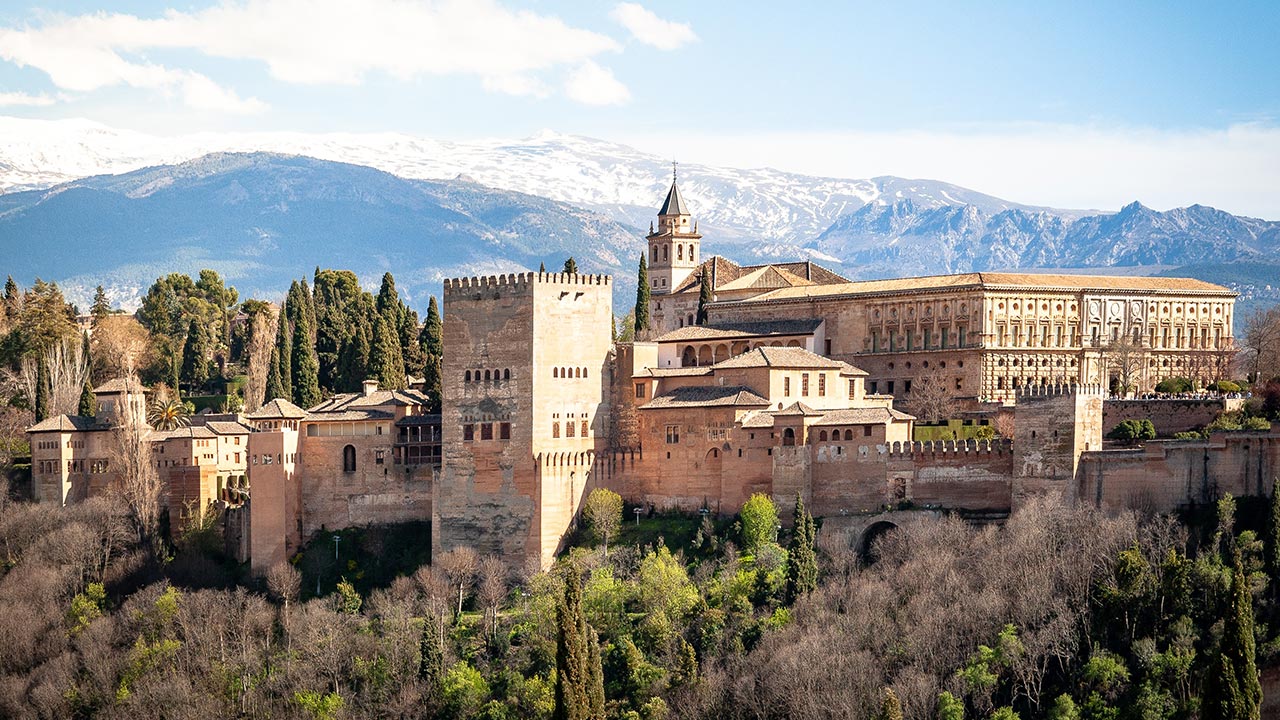
Best for: Moorish architecture and tapas
Location: Andalusia
Visit Granada, and you might feel as if you’ve crossed over into Morocco. From Moorish ruins to souk-lined streets, Granada’s charm lies in how different it feels from the rest of Spain. It’s home to the celebrated Alhambra Palace, a Nasrid fortress which held out as the final Islamic stronghold in Spain until it fell to the Catholics in 1492. Set on a hilltop against the snow-capped peaks of the Sierra Nevada, it’s a stirring sight that will conjure images of medieval crusades and high drama. Nowadays, it’s regarded as one of the finest examples of Islamic architecture outside the Middle East, making Granada well worth a visit. Yet some of Granada’s most charming sights are far more humble, such as the labyrinthine sprawl of the Albaicin, the city’s medieval Arab quarter. One of the best ways to explore Granada is to put your map away and explore these white-washed streets (and follow your nose). You won’t always know where you’re going, but you’ll never be far from a local tapas bar and a flamenco guitarist.
Insider tip: tapas in Granada come free with a drink, meaning you can sample a range of local flavours for just €2 a beer.
Cadiz
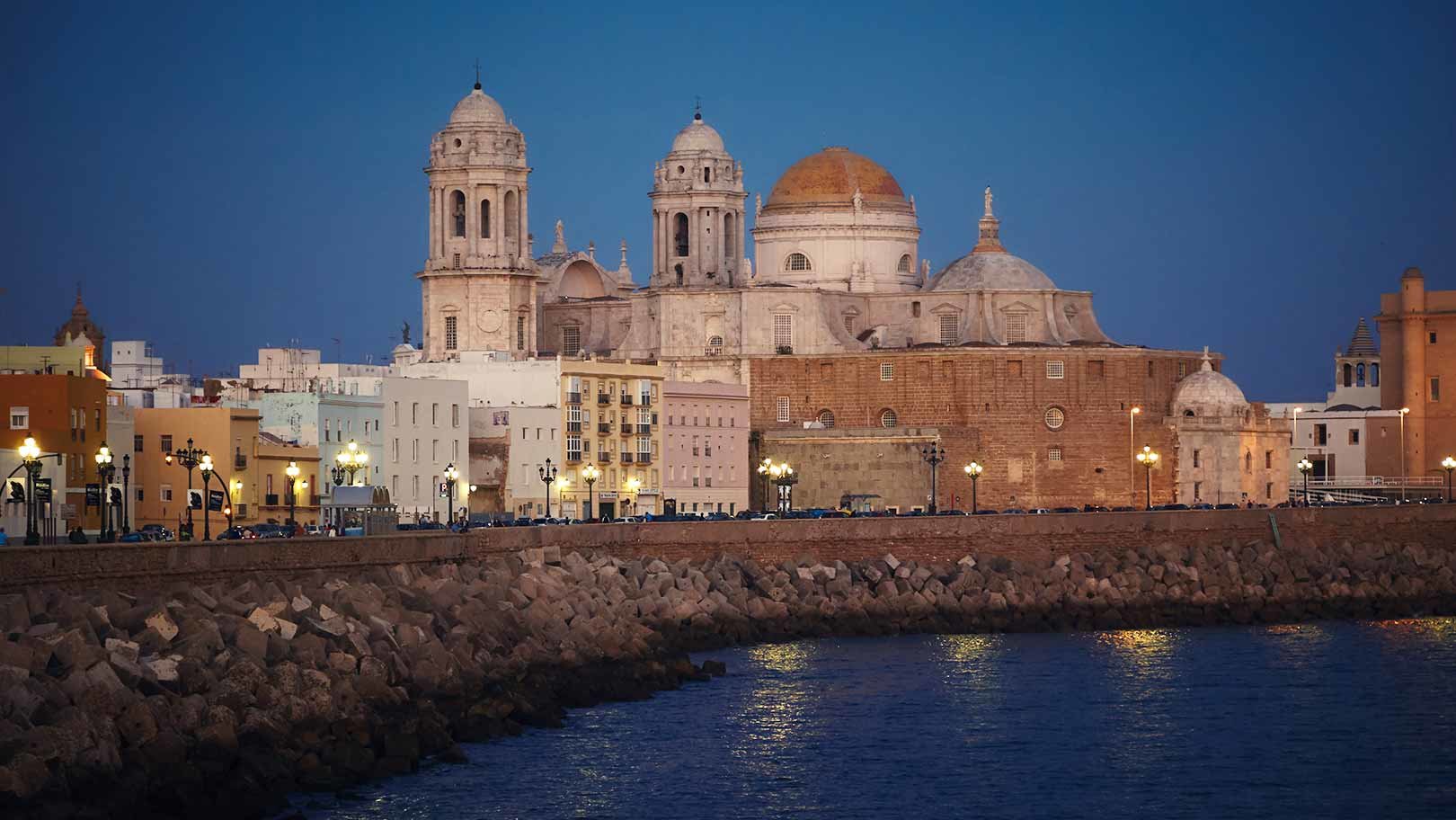
Best for: Colonial history and beaches
Location: Andalusia
Cadiz today is a small, charming city nestled on Spain’s south Atlantic coast; but don’t let that distract you from its formidable history. Said to be one of the oldest continuously inhabited cities in Europe, this is a place which has been shaped by Phoenicians, Romans, Moors and Catholics down the ages. It stepped into the limelight during the Age of Exploration, as Spain’s principal port from which Christopher Colombus embarked on his travels. Today, it boasts a town of white-washed houses and cobbled streets, punctuated by golden domes that hint at an illustrious past. If you’ve got a few days here, be sure to admire the baroque grandeur of Cadiz Cathedral, explore the ruins of the Roman Theatre and amble along the beautiful Atlantic coast. If you visit Cadiz in February, don’t miss the local Carnival, which sees gaditanos embrace the fiesta spirit over a lively weekend.
Malaga
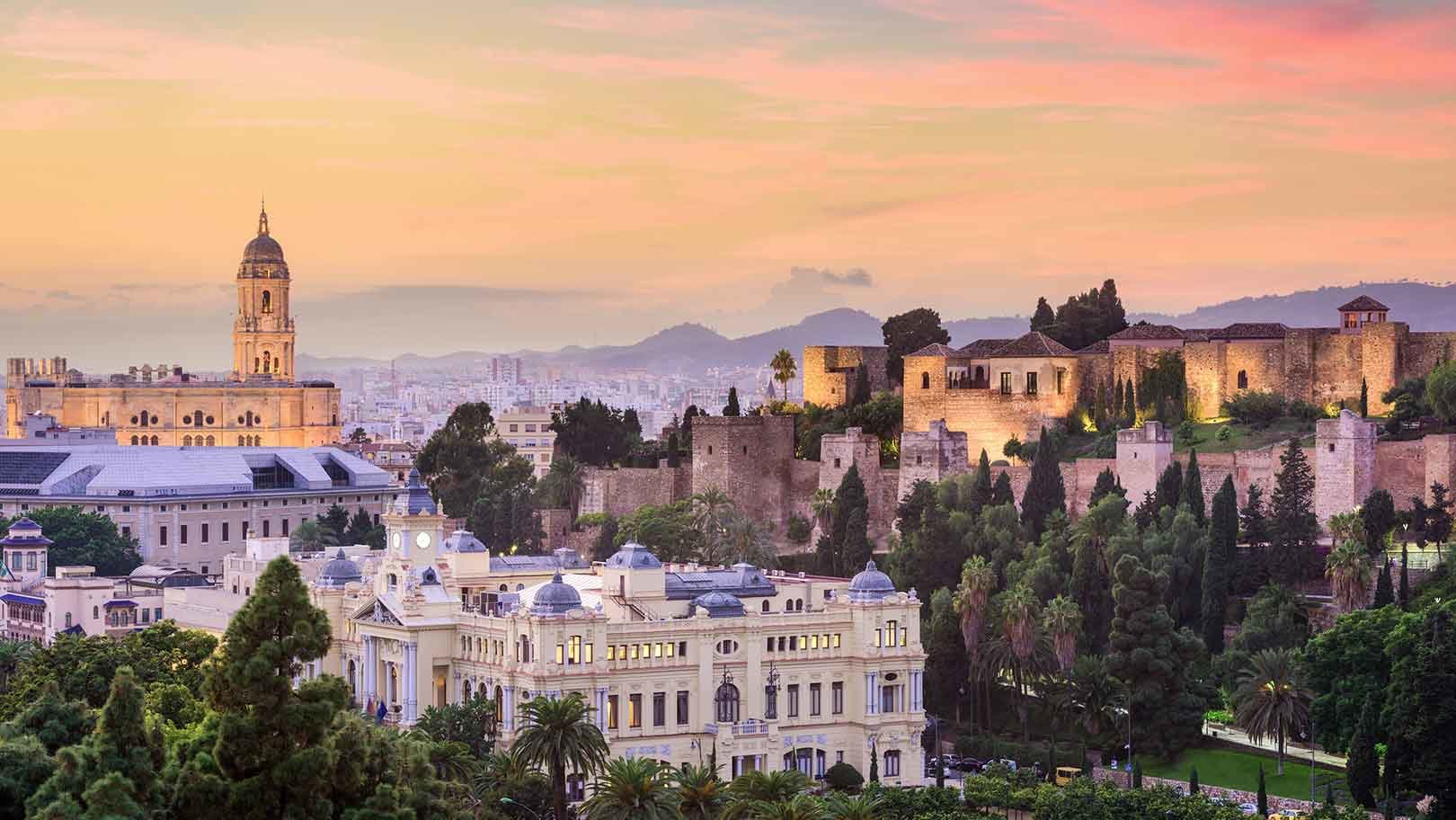
Best for: Ancient history and modern art
Location: Andalusia
We’ve chosen Malaga as one of our best places to visit in Spain because it has a history to rival its Andalusian neighbours, and (alongside Cadiz) is said to be one of Europe’s oldest cities. The hometown of Pablo Picasso, here you’ll find the Museo Picasso, home to the most extensive collection of the artist’s works. If you’re interested in historical ruins, take your pick from the medieval Alcazaba fortress, the Castillo Gibralfaro and the Roman Theatre – you’ll quickly see how distinctive cultures have left their mark on sunny Malaga. If you like your escapes with a luxurious touch, head to nearby Marbella – famous for its yachts and expensive nightclubs – to rub shoulders with Europe’s super rich. For those of you looking for something more humble (but equally beautiful), be sure to visit Nerja, where you’ll find crystalline blue sea and a series of caves housing mysterious cave paintings and rock formations.
Top five places to visit in Spain for hiking
The Pyrenees
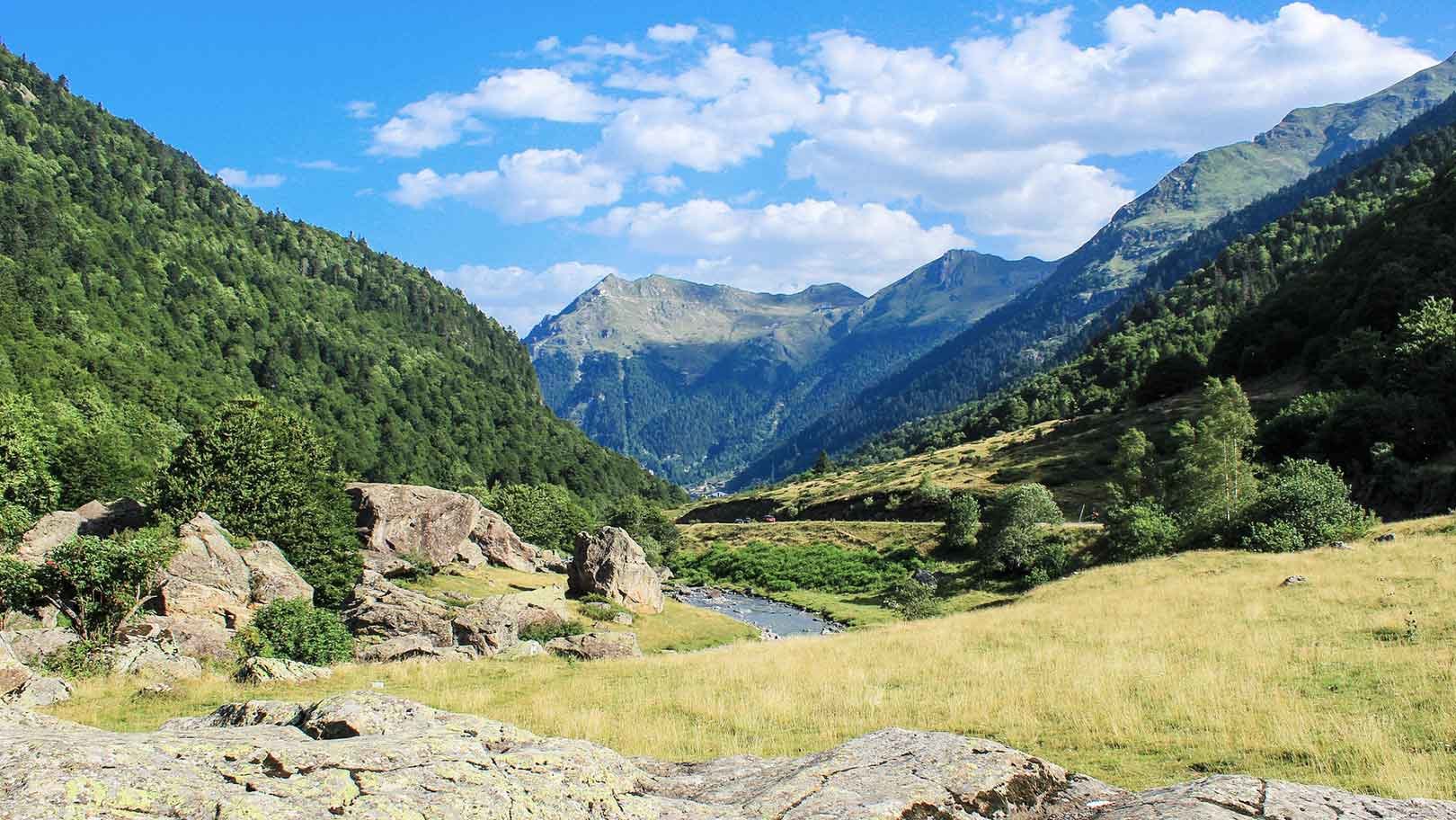
Best for: Alpine hiking and mountain-biking
Location: Catalonia, Aragon, Navarra and the Basque Country
Straddling the Franco-Spanish border, the Pyrenees mountain range is characterised by lush, alpine beauty and one of the best hiking destinations in Spain. If you’re looking for a summer adventure with mild temperatures, camping in the Pyrenees is an excellent option. The summer months offer the perfect opportunity to explore the region’s fragrant pine forests and tackle some challenging hikes. If you’re looking for a real adrenaline hit, the Pyrenees is a fantastic location for some off-grid mountain-biking. Winter has plenty to offer adventure-lovers among you too, from skiing to ice climbing.
The Sierra Nevada
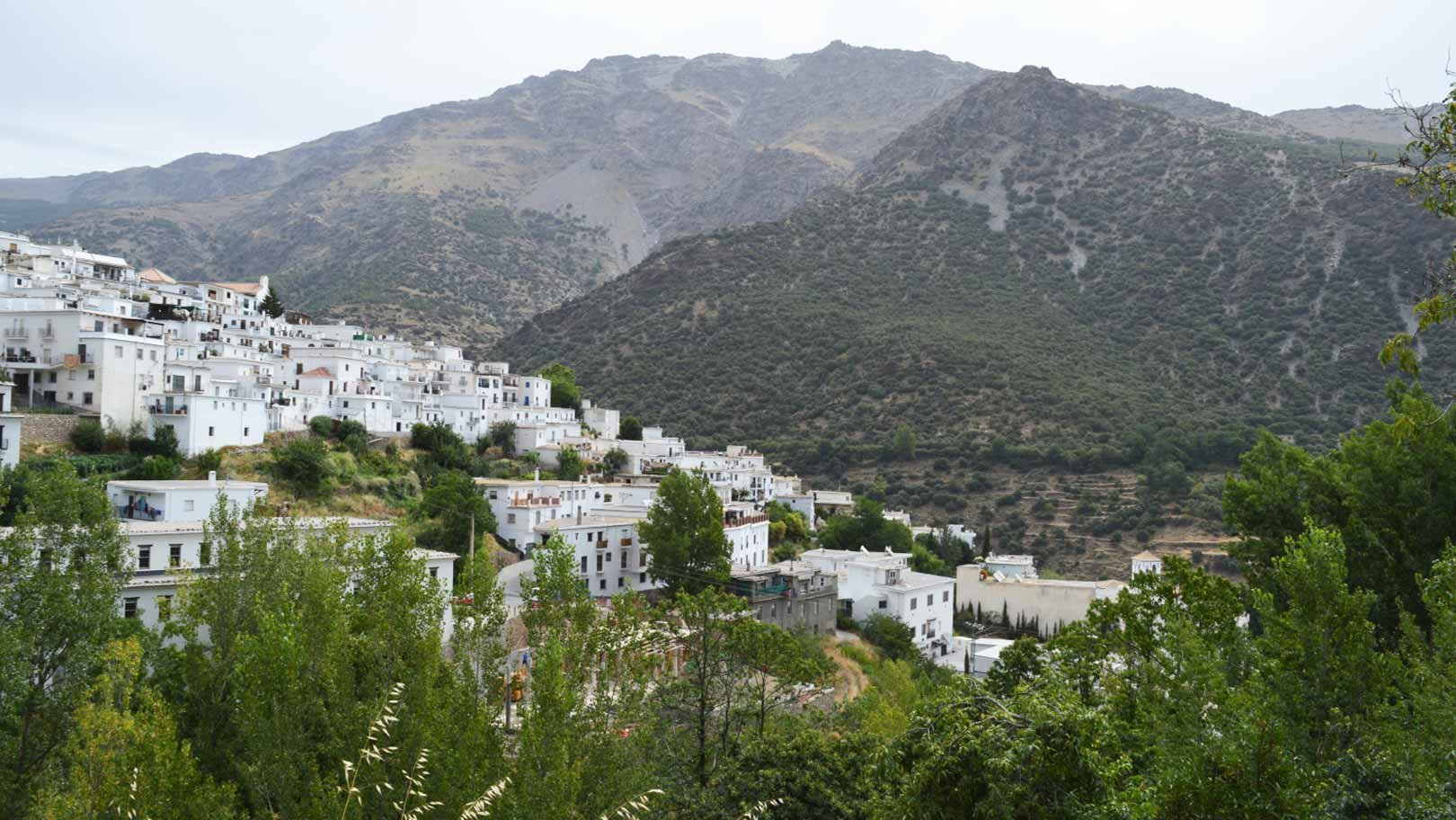
Best for: Rugged landscapes and skiing
Location: Andalusia
The Sierra Nevada, or the ‘Snowy Mountains’, is the highest mountain-range in the country, so it’s one of the best places to visit in Spain for beautiful vistas. Located just off the Costa del Sol in the south, it’s an unlikely contender for the best skiing in Spain – but visit in winter, and you’ll find a skiers’ paradise. Where the Pyrenees are lush and serene, the Sierra Nevada boasts rugged, dry terrain punctuated with cacti, juniper and rosemary. Go hiking here in summer, and you’ll breathe the aroma of the wild herbs that grow all over the mountains. On the southern slopes of the sierra, you’ll find the Alpujarras, an area of white-washed villages and sloped agricultural land, nourished by water from the snow melt each year. The towns and villages offer a glimpse into local mountain life, and a welcome reprieve from challenging hikes.
The Camino de Santiago
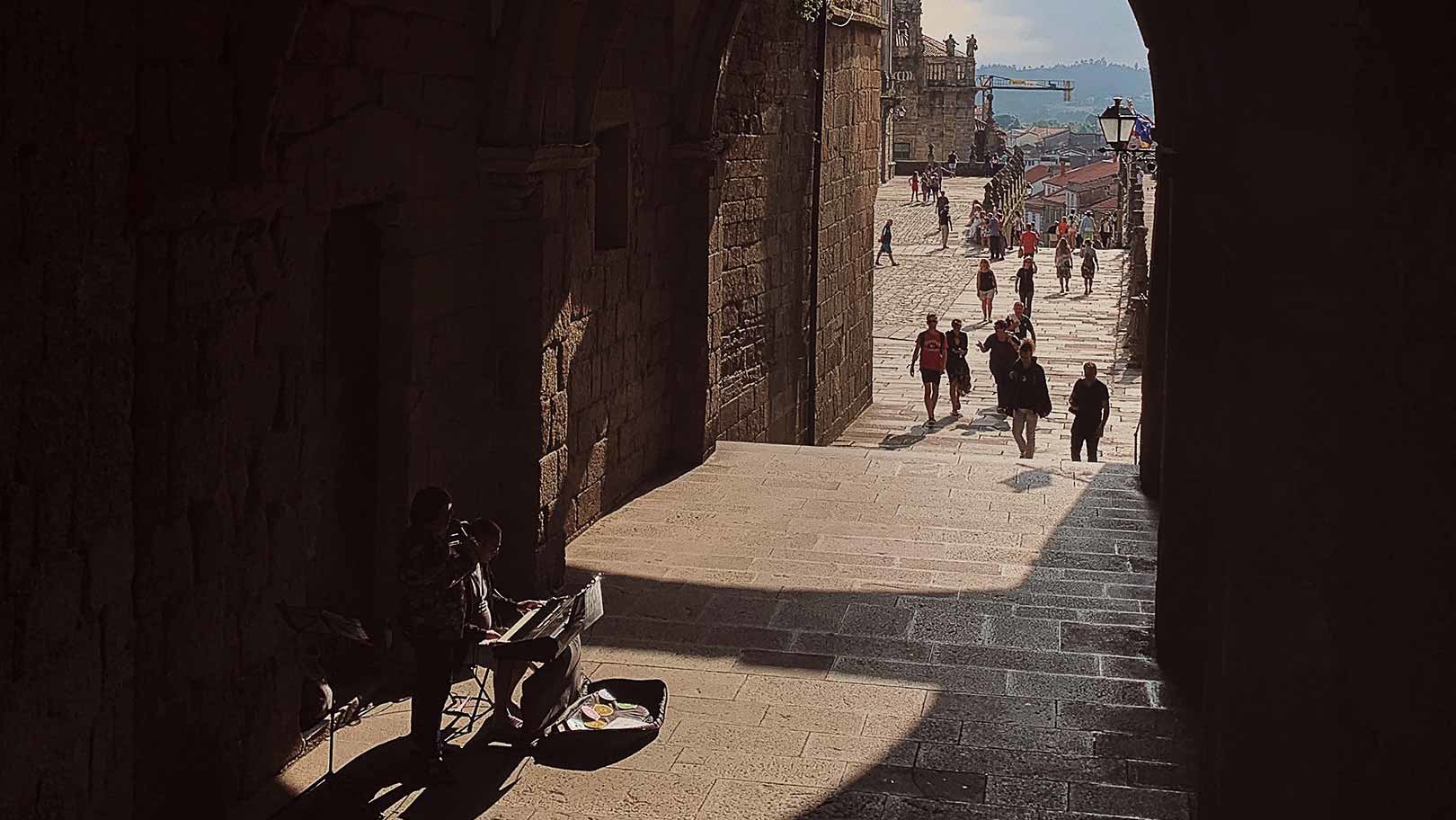
Best for: Cross-country pilgrimage hiking
Location: From the Pyrenees to Santiago de Compostela
The Camino de Santiago is a network of medieval pilgrimage routes across Spain and southern France, all leading to Santiago de Compostela on the Atlantic coast. It was one of the most important pilgrimage routes in the Middle Ages, leading the faithful to the tomb of St. James (Santiago in Spanish), who was believed to be buried in the Galician city. In modern times, it draws a range of adventurers with a range of (often secular) reasons for undertaking the pilgrimage. While there are a variety of routes across the country, the most famous one is the Camino Frances – the French Route – which begins at the French town of Saint Jean Pied-de-Port, continues through the Pyrenees, passes across the north of Spain through the towns of Pamplona, Burgos and Leon, before reaching its endpoint in Santiago de Compostela. The full hike can take anywhere between 30–35 days, if you were to walk 23–27 kilometres a day. You’re guaranteed to meet fellow ‘pilgrims’ along the route, meaning that you’re highly likely to make new friends.
Mallorca
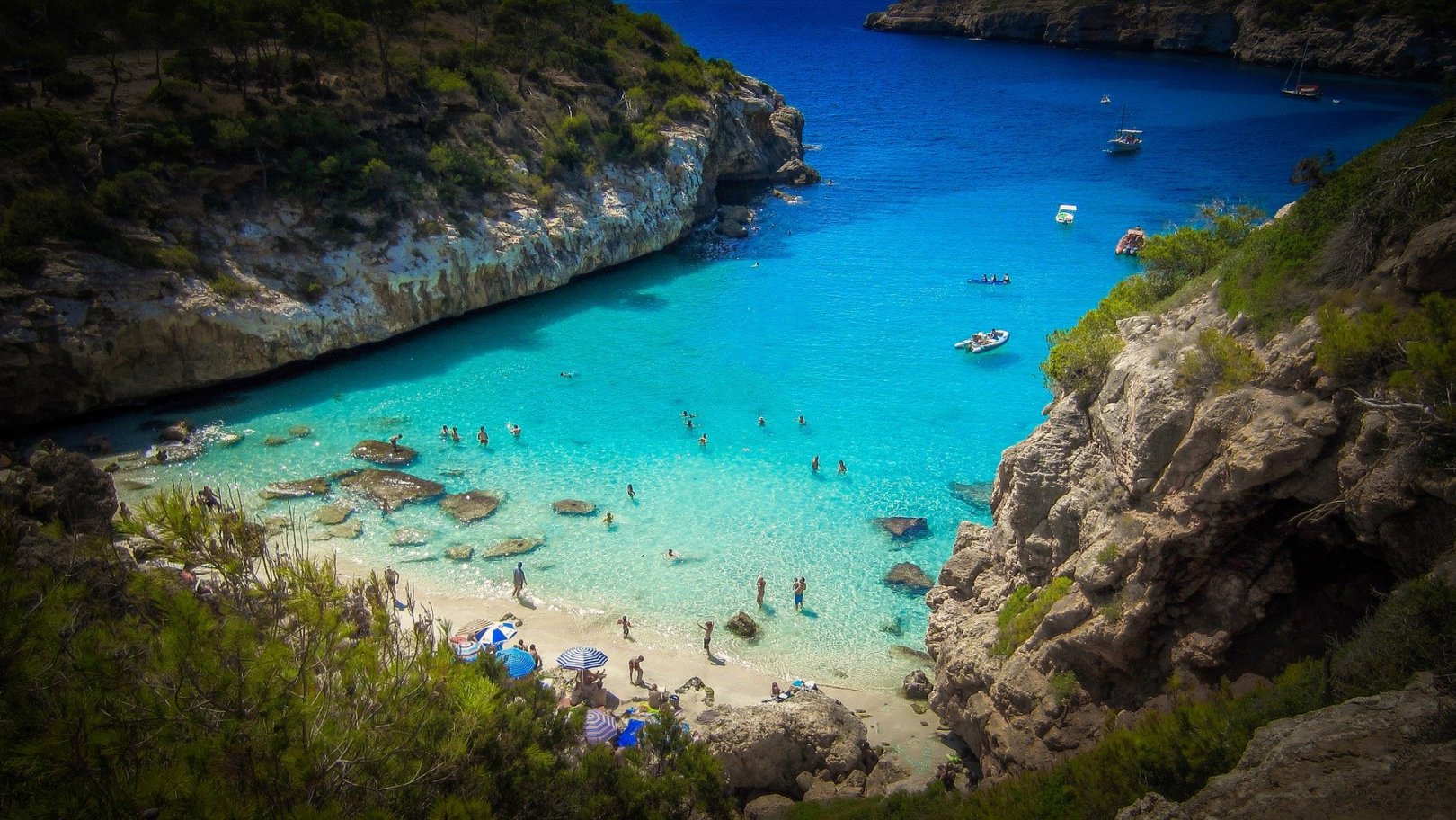
Best for: Mediterranean island hiking
Location: The Balearic Islands
Mallorca is a renowned destination for family holidays and party escapes, but it’s also a lesser-known hikers’ paradise. Venture inland from its famous beaches, and you’ll find a steep, rugged terrain characterised by serrated white rock and olive trees. The village of Valldemossa is the starting point of a variety of scenic hikes, taking you through verdant forests and olive groves. Another famous hiking route in Mallorca lies along the Torrent de Pareis, an exciting path along which you’ll have to climb over giant boulders through a dramatic cliff gorge. Those of you looking for a challenging ascent should check out the route from Lluc Monastery to Puig de Massanella, which will see you tackle Mallorca’s highest accessible peak.
El Caminito del Rey
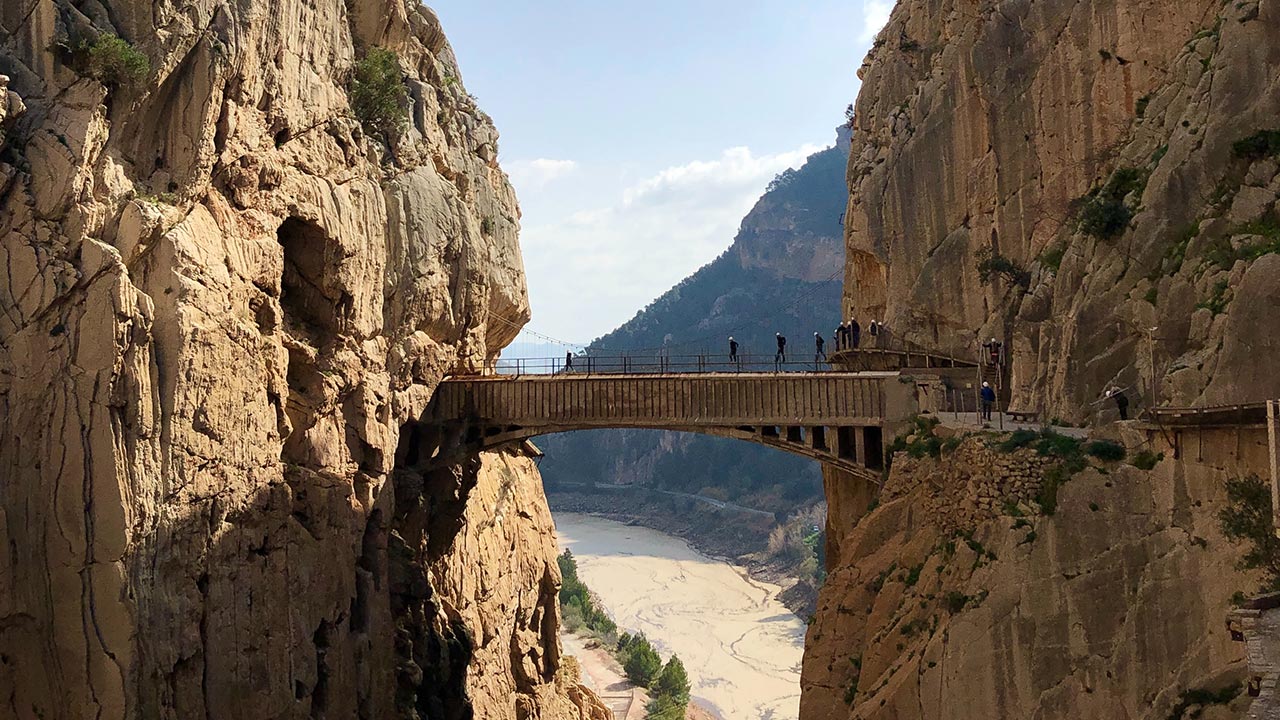
Best for: Dramatic cliff-side walking
Location: Malaga, Andalusia
One of the best places to visit in Spain for taking hiking to new heights, the Caminito del Rey is an adrenaline-inducing walkway, pinned to the cliffs of a cavernous gorge. Once considered ‘Spain’s most dangerous hike’ due to the deadly condition of the route, it has since been refurbished and has re-opened to the public. The route is 7 kilometres long, and runs through woodland before opening onto the edge of a precipitous gorge, which you’ll traverse along narrow walkways. If you can muster the courage to look down, you’ll be rewarded with some truly breath-taking – if dizzying – views.
Top five places to visit for food and drink in Spain
Galicia

Famous for: Fresh seafood
Location: Atlantic Coast
Galicia, located on the Atlantic Coast, is blessed with fresh, bursting seafood. Its signature dish is pulpo a la gallega, also called pulpo a feira: slices of potatoes topped with paprika-spiced octopus. The region is also famous for its mussels, or mejillones, which are enjoyed in a white-wine sauce with a squeeze of lemon. During the colder months, locals enjoy a caldo gallego – a warming stew cooked with potatoes, white beans, sausage and greens.
San Sebastian

Best for: Pintxos
Location: The Basque Country
The fiercely-independent Basque Country is renowned for its innovative cuisine and Michelin-starred restaurants; San Sebastian alone lays claim to two of the world’s best restaurants: Arzak and Mugaritz, making it one of our top places to go in Spain for a food-focused trip. But the real pleasure on offer for foodies lies beyond its fancy establishments, in the traditional pintxos bars of the Old Town. Pintxos are the Basque Country’s answer to tapas, consisting of layers of ingredients delicately pinned onto a slice of bread, washed down with a glass of wine. From battered artichokes oozing with goats cheese to grilled shrimp paired with mango, the array of options will impress you with their originality. The best way to explore the city is to amble through the Old Town, one pintxo bar at a time.
Valencia
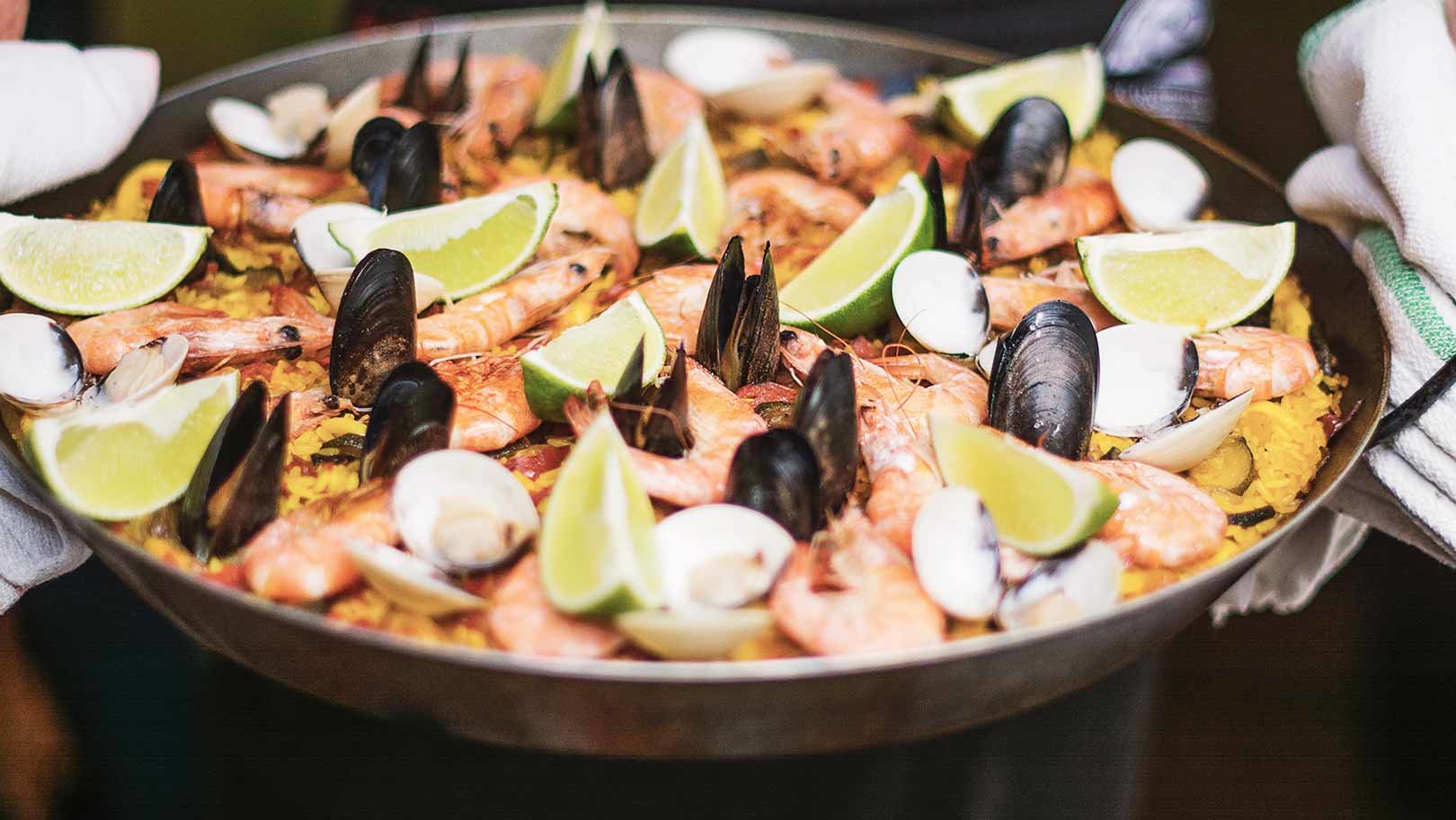
Famous for: Paella valenciana
Location: Mediterranean Coast
Valencia is the hometown of Spain’s most iconic dish: paella. The beloved dish takes its name from the huge shallow pan in which the rice is cooked, where it’s infused with saffron (which lends it its golden colour) and laden with seafood or meat. Seafood plays a prominent role in Valencia’s regional cuisine, thanks to its stretches of Mediterranean coast. Other famous dishes to try include arros negre, a deep black rice soaked in squid ink; suquet de peix, a potato and fish stew; and all i pebre, a dish cooked with eels, potato and chilli.
La Rioja

Famous for: Rioja wines
Location: Northern Spain
Wine-lovers amongst you should head to the homelands of Rioja, the eponymous province of La Rioja. This northern Spanish region is characterised by vast dry plains, threaded with vineyards and scattered with hilltop monasteries. The wines produced here are a deep silky red, and there are a plethora of wineries that you can visit either solo or through a tour; famous wineries include Bodegas Muga, Bodegas Lopez del Heredia, Bodegas Tritium and Bodegas Lecea. They range from the traditional and rustic to the ultra-modern, so there’s something to intrigue all varieties of wine-lover.
Jerez de la Frontera
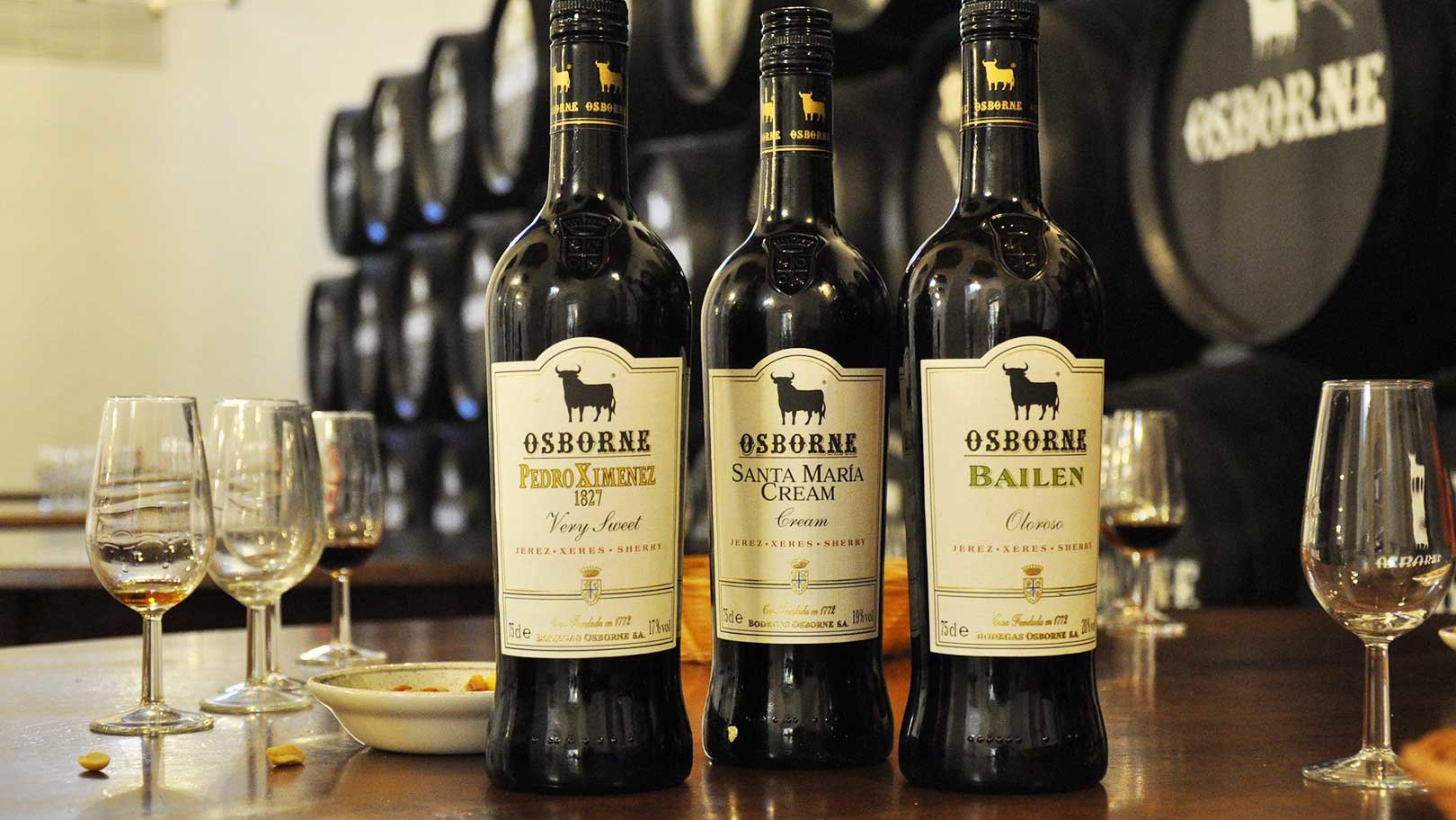
Famous for: The hometown of sherry
Location: Andalusia, southern Spain
Often simply called Jerez, this is the birthplace of Spanish sherry – which is where the English word comes from. This fortified wine actually originates from a triangle formed by three towns – Jerez, Sanlúcar de Barrameda and El Puerto de Santa Maria – referred to as the Sherry Triangle. Jerez, being the largest of these towns, is the ideal starting point to your gastronomic adventures. Famous bodegas to explore include Gonzales Byass – Tio Pepe, Emilio Lustau, Hidalgo and Real Tesoro y Valdespino.

